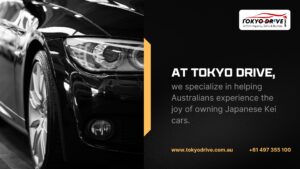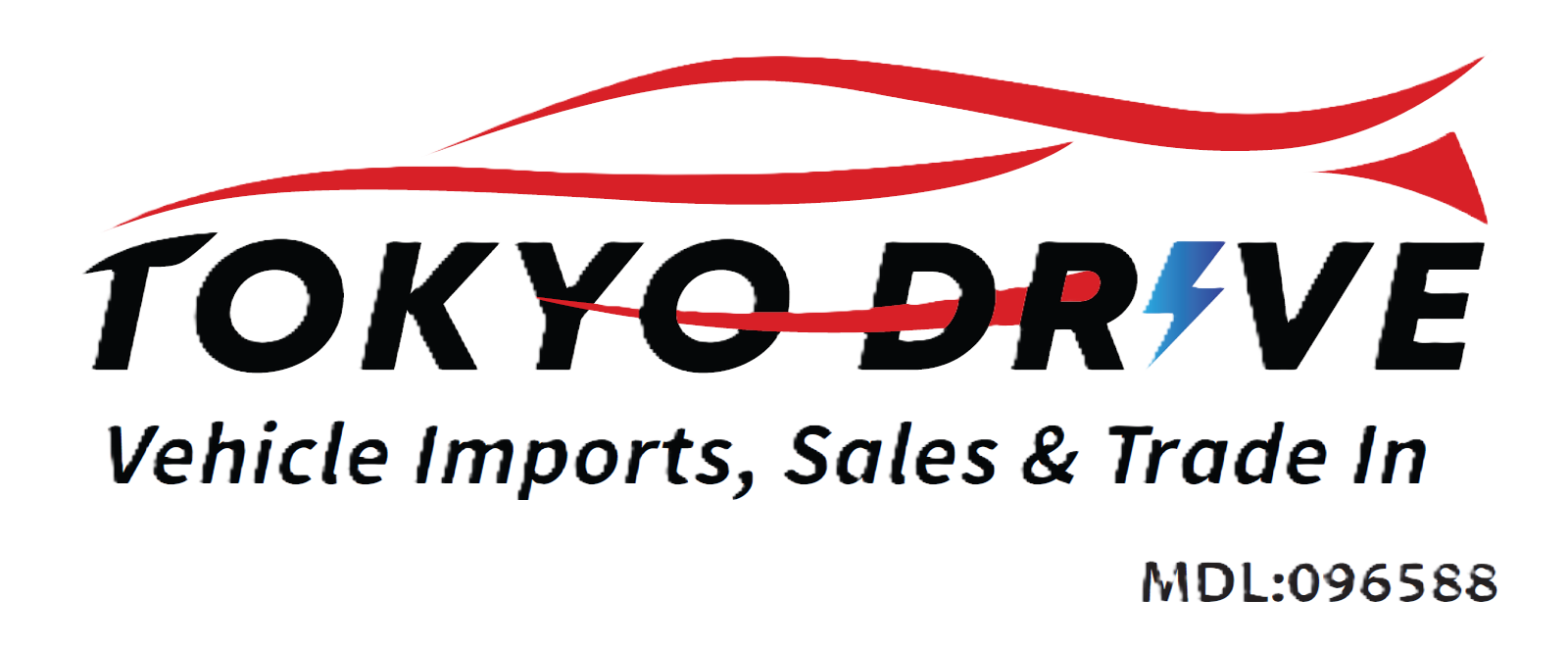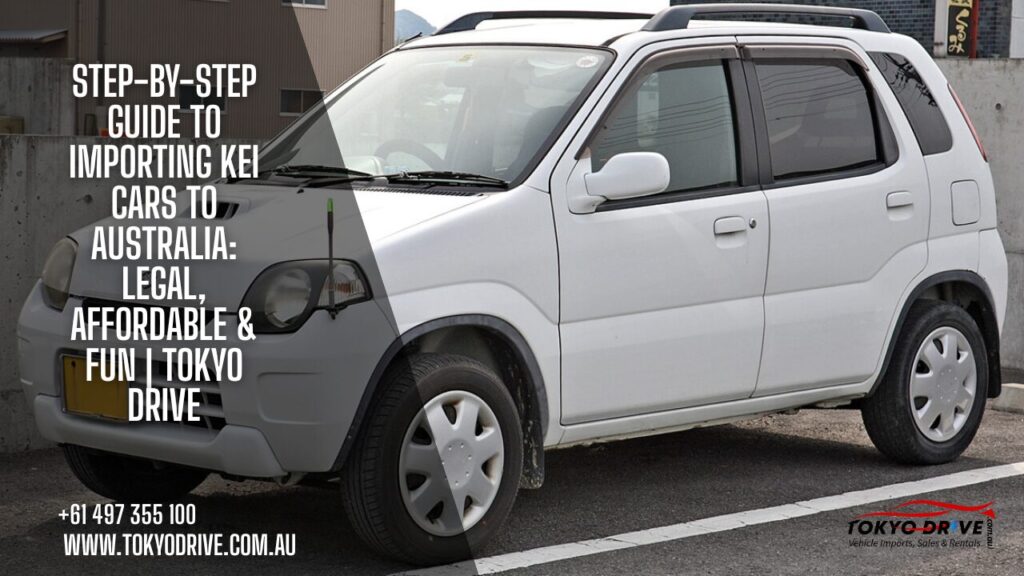If you’ve ever seen those tiny, quirky, and incredibly practical Japanese cars zipping through narrow Tokyo streets, you’ve probably come across a Kei car. These compact vehicles are not just adorable — they’re also fuel-efficient, budget-friendly, and surprisingly capable. Now, imagine owning one right here in Australia.
At Tokyo Drive, we’ve seen a major rise in the popularity of Kei cars among Australian enthusiasts and city drivers alike. But importing one isn’t just a matter of clicking “buy” on a Japanese auction site. It’s a process — and like any vehicle import, it comes with rules, requirements, and steps you need to follow.
This blog breaks it all down in a step-by-step guide designed to help you legally and affordably bring a Kei car into Australia, whether you’re a collector, commuter, or just in love with JDM culture.
What Are Kei Cars?
Kei cars, short for “Keijidōsha,” are ultra-compact cars regulated under Japanese government specs. These vehicles are restricted in size and engine capacity (max 660cc), making them perfect for congested cities and tight parking spaces.
Popular models include the Suzuki Alto Works, Honda Beat, Daihatsu Hijet, and Subaru Sambar. Many come with surprising features like turbocharged engines, 4WD, and convertible tops — all in a vehicle that’s barely bigger than a golf cart!
Why Import a Kei Car?
- Affordability: Kei cars are budget-friendly, both to buy and to run.
- Fuel Efficiency: Excellent mileage makes them eco-smart daily drivers.
- Unique Style: These cars stand out — expect compliments everywhere.
- Ease of Parking: Small size means no more hunting for big spots.
That’s why more Aussies are turning to Tokyo Drive to bring these little legends into the country.
Step 1: Research the Right Model

Before importing, you need to choose a Kei car that fits your lifestyle and complies with Australian import regulations. Make sure the model you want is at least 25 years old, or approved under the Specialist and Enthusiast Vehicle Scheme (SEVS).
Check:
- Parts availability
- Common mechanical issues
- Market price in Japan
Popular options include:
- Suzuki Cappuccino
- Daihatsu Copen
- Mitsubishi Minicab
- Mazda Autozam AZ-1
Step 2: Get Import Approval
Apply for a Vehicle Import Approval (VIA) through the Department of Infrastructure. This is a legal requirement for bringing any car into Australia. Without it, your car can be denied entry or destroyed.
Documents you’ll need:
- Proof of ownership
- Identification
- Model verification (if using SEVS)
The approval fee is around AUD 50, and processing takes 4–6 weeks.
Step 3: Use a Trusted Import Agent
While you can DIY the process, working with a licensed import agent like Tokyo Drive simplifies everything. We manage auctions, verify vehicle history, handle logistics, and make sure your Kei car complies with all Australian laws.
Benefits include:
- Accurate cost estimates
- Quarantine and customs handling
- Access to exclusive dealer networks
Step 4: Purchase and Shipping
Once you select a car, the purchase process begins. Most sales happen through Japanese auctions or exporters.
Choose your shipping method:
- Roll-on/Roll-off (RoRo): Cheaper, but exposes the car to elements
- Container shipping: Safer but costs more
Shipping costs usually range between AUD 1,500–2,500 depending on the method and port.
Step 5: Customs, Quarantine & Cleaning
After your Kei car lands in Australia, it undergoes several checks:
- Customs Clearance: Involves paperwork and fees
- AQIS Quarantine Inspection: Your car must be squeaky clean, especially underneath
- Steam Cleaning (if needed): Adds extra cost (AUD 300–600)
Step 6: Compliance Modifications
Even small cars like Kei vehicles must meet Australian road standards. You may need:
- Child restraint anchor installation
- Seatbelt compliance
- Speedometer conversion to km/h
- Lighting modifications
Expect to pay AUD 1,000–2,000 depending on the required upgrades.
Step 7: Registration & Insurance
Now that your car meets Aussie standards, it’s time to register it in your state.
Requirements include:
- Vehicle Inspection Certificate
- Compliance Certificate
- Payment of Stamp Duty and Registration Fee
Also, arrange insurance. Not all providers cover imports, so choose a company familiar with JDM vehicles.
Final Thoughts from Tokyo Drive
Importing a Kei car is a rewarding experience — and when done right, it’s more affordable and more fun than most people realize. These compact rides make the perfect daily driver, project car, or city runabout. And let’s be honest: they’re a head-turner on any Australian road.
At Tokyo Drive, we specialize in helping Australians experience the joy of owning Japanese Kei cars. From selecting your car to navigating the red tape, we’re here every step of the way.

Key Takeaways
- Do your homework on model eligibility and parts availability
- Always apply for VIA before purchasing
- Consider hiring a professional import agent
- Budget for shipping, customs, and compliance costs
- Register and insure the car before hitting the road
Join the JDM movement today — and do it with the confidence that you’ve got Tokyo Drive in your corner.
Tokyo Drive – Your Gateway to JDM Kei Car Ownership in Australia.



Really helpful and clear guide! Importing Kei cars always seemed complicated, but this breakdown makes the whole process feel much more manageable. Great resource for anyone considering a JDM import to Australia!
Thank you
Thanks so much! We’re really glad the guide helped make things clearer.
tokyodrive.com.au
tokyodrive.com.au